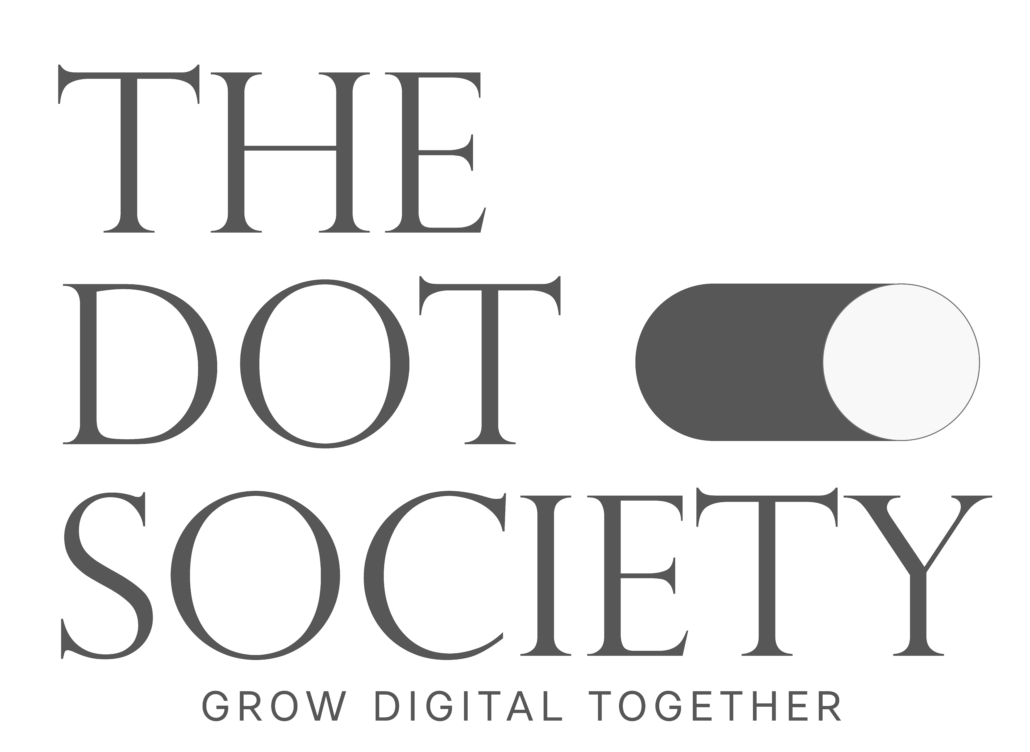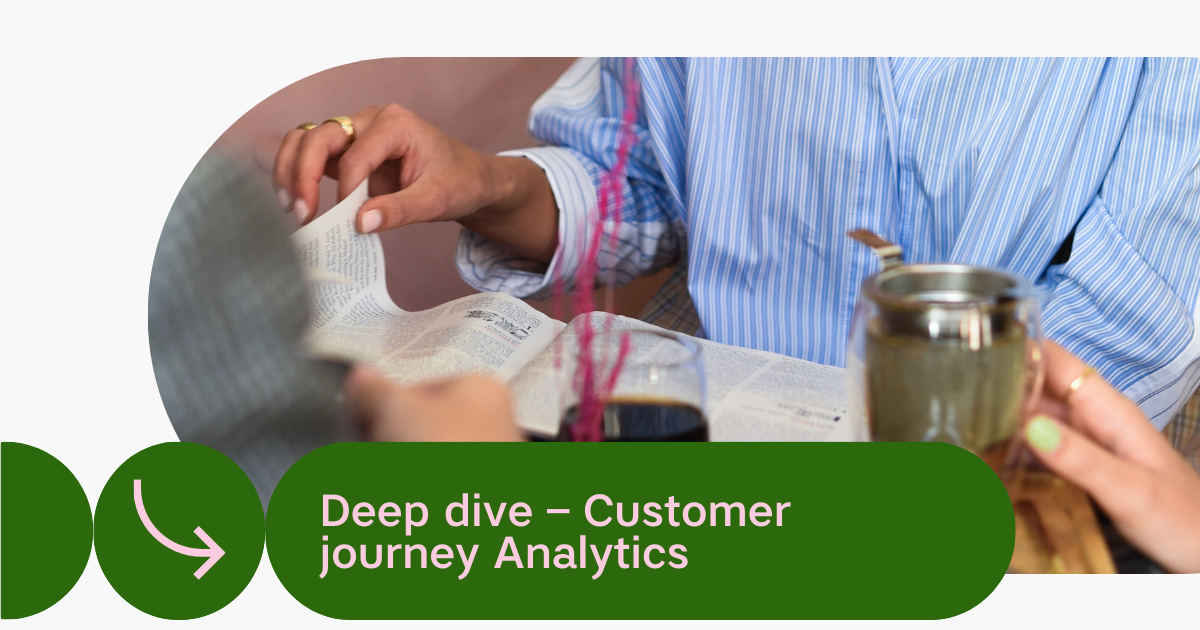Customer Journey Analytics? CJA? Never heard of this term before? But customer journey, does that ring a bell? The path that the customer is following via various touchpoints before making a purchase decision? Well, let us start from there!
At The Dot Society, we are working daily on mapping the customer journey. Through different channels, we try to get in touch with potential customers with relevant messages. We analyze the value and performances of all these touchpoints on a daily basis in order to make the necessary optimizations and decisions. And it’s exactly here, where we as a digital performance marketing agency can make the difference for you & your customers.
Earned, Owned & Paid media
To start, we always emphasise the importance of a good balance between owned, earned & paid media. Owned media is the amount of traffic coming from channels you maintain yourself or via direct traffic. Earned media gives your brand the trust, cause traffic coming from earned media is shared by someone else. Last but not least you have the paid media. If you want to grow your business or need to expand internationally you need to use the correct paid media mix to penetrate a new market or target audience.
Here you can find an overview of this balance (a good ratio is 40% owned, 40% paid and 20% earned). However, if you are a new start-up or business, your paid dependency will be higher, even up to 60%.
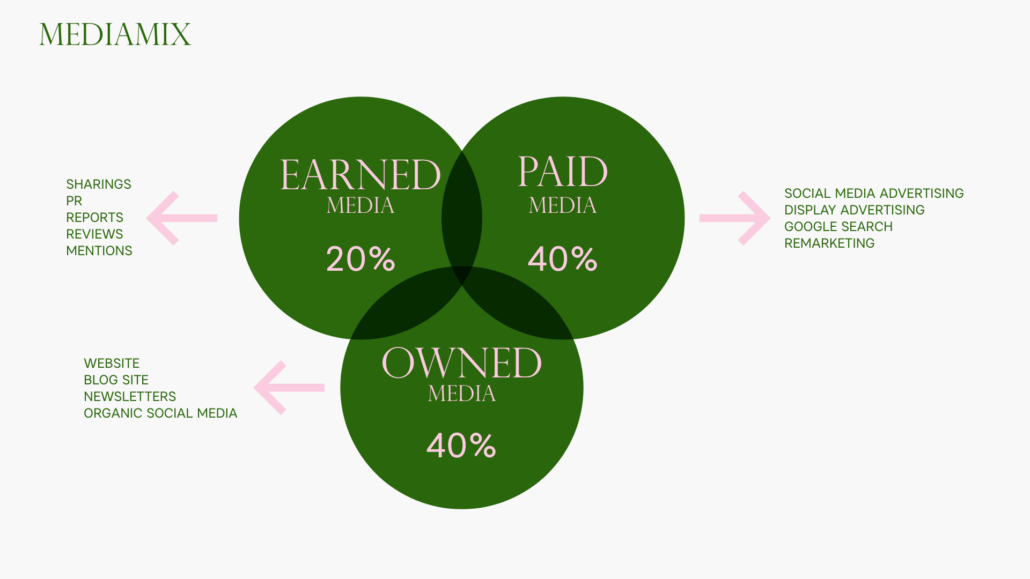
What’s Customer Journey Analytics?
In line with the increasing share of online customers, the number of channels to communicate with customers is also expanding. Based on DDMA, Data-Driven Marketing Association 2020, no less than 73% of large organizations (this means more than 100 employees) are using 8 or more channels to communicate with their clients. It is also here that the core of Customer Journey Analytics is situated, namely getting insight into the performance of these various channels. Because how and through which channels does the customer get to know your brand or product? With CJA you can get a grounded understanding of this and therefore the necessary optimizations can be implemented.
The evolution of the customer journey
An important evolution within the customer journey is the fact that it used to be seen as a written out roadmap of phases through which the customer passes. Something that you can fully manage and steer as an organization. Unfortunately, less is true. There is not just one general customer journey, there are thousands of variants. And it is the consumer who is in control and who decides where and when he/she has contact with your brand. So if you thought you could determine everything in advance from awareness to consideration to conversion, think again.
How do I map this out?
Via customer journey Analytics, we gain insight into all these different touchpoints and which channels lead to which final consumer actions. In practice, we do this by setting up all the tracking correctly on your website, so that we receive all the different data via Google Analytics. Has someone clicked twice on a Facebook ad and then made a final purchase via one of your organic social media posts? Then we can track this correctly, with corresponding sales value, and quality KPIs of the various website visits. Fantastic, right?
In Google Analytics you have the report ‘best conversion paths’. Here you immediately see the impact of the customer journey on your conversion. Most of the time customers need to orient themselves first on your website, think it through and come back again before they make a purchase. The higher your average order value, the longer your conversion path.
Therefore it might be useful to look at the customer journey with more ‘soft’ conversions like newsletter subscriptions as well.
Examples of a conversion path:
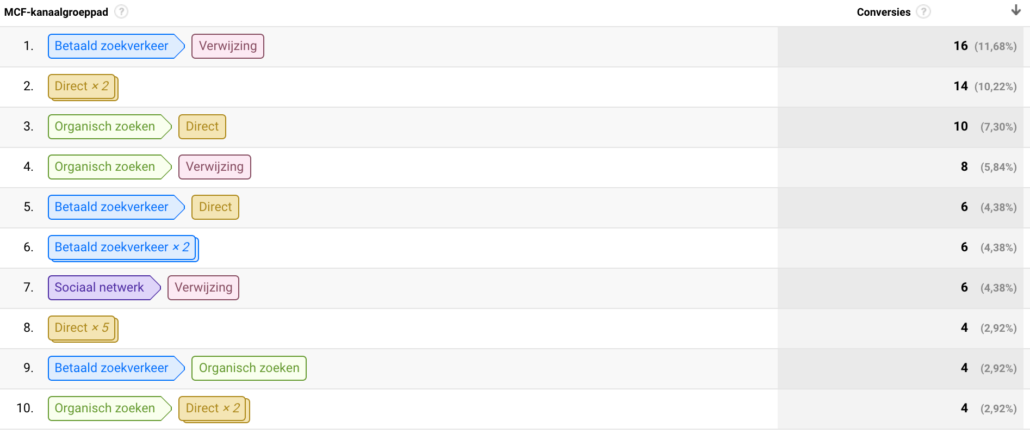
What can we do with these insights?
Based on all this data, we can propose and implement specific optimizations to improve the customer experience. And the latter is a lot more important than you would initially think. In recent decades, scientific research has shown that the customer experience is precisely the point where you, as an organization, can make the difference. Production and operational processes can easily be copied, but the way you approach and treat your customers is quite different.
When you have a good understanding of your customer journey you also know how to spend your marketing budget. You will have a clear understanding of which channel will have which value and role in the customer journey. Is a certain channel more important to you in the awareness phase (for example youtube) or in the conversion phase (for example Google search or dynamic remarketing on Facebook/Instagram)? Keep those numbers in an excel overview and calculate your estimated revenue based on a certain budget (or the other way around).
It’s not about creating one absolute ideal experience, it’s about creating a customer journey that is person and situation specific. And that’s why it’s essential to have a good coherence between the different interactions. That’s why it’s totally out of the grain to only focus on paid media (social media ads / Google CPC / etc.), as also your organic channels & PR activities need to be on point as well. It’s all the parts of the puzzle that will get you the maximum result. Putting your effort and money into one channel will never give you the desired result, it’s a matter of teamwork, cause remember teamwork makes the dream work!
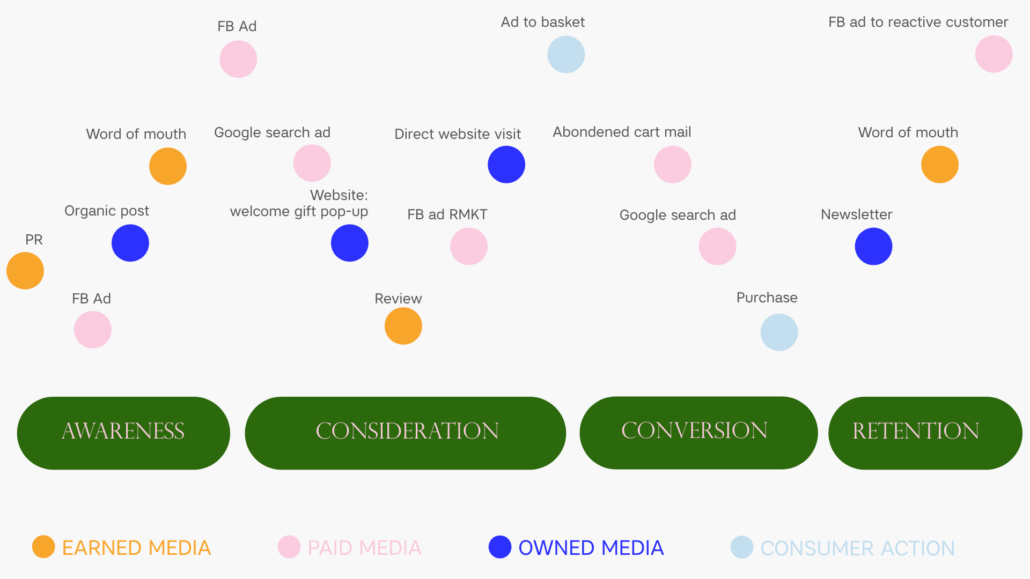
How do I calculate my ROAS?
One of the most important things to calculate is your return on ad spend. The biggest advantage of digital marketing is that we can track all the results and make good decisions on where to spend your money. ROAS or return on ad spend is the amount of revenue that is allocated to a certain campaign divided by the media budget you spend in those campaigns.
For example, you host a campaign about Black Friday and invest €1000 in the campaign.
In Facebook Business Manager, where your campaigns are being controlled, add two extra metrics to your columns: “purchase value” and “ROAS”. In the column purchase value, you will see the attributed revenue to that campaign. Meaning that this campaign was part of the customer journey of your end client.
| Investment | Purchase Value | ROAS |
| €1000 | €6000 | =€6000/€1000 or 600% |
A good ROAS for conversion campaigns in Facebook/Instagram is around 350% or each euro will bring you 4-5 euro. In Pinterest, a good conversion ROAS is 300% in the fashion industry.
Attributed vs. direct revenue
When advertising on social media channels you will see different results and allocated revenues to a specific campaign. We call this the difference between attributed and direct revenue. Direct revenue is the revenue directly allocated to a certain campaign when the customer clicks on an ad and directly buys a certain product.
Attributed revenue is where the customer journey comes into place. A customer clicks on an ad but doesn’t immediately buy the product. After two days he/she comes back and completes the purchase. This revenue won’t be allocated in Google Analytics directly to the campaign, but in the platforms of the social media this will appear as a purchase.
How does Facebook/Instagram decide to allocate a purchase to a campaign? All is depending on your conversion window. The standard in Facebook/Instagram is
7-day click and 1-day view.
The attribution window is the number of days between when a person viewed or clicked on your ad and subsequently took an action. We measure ad actions based on clicks and views of your ad:
- Click-through attribution: A person clicked your ad and took an action.
- View-through attribution: A person saw your ad, didn’t click it, but took an action within the attribution window.
So for Facebook and Instagram, the rule is: If someone has clicked on your ad and has taken an action within 7 days, this purchase value will be allocated to your ad. If someone has only viewed your ad and has taken an action within 1 day, again this purchase value will be allocated to your ad.
The truth is somewhere in the middle between attributed and direct revenue. However, it is super important to get a good notice about a typical customer journey on your website and define the best customer path to allocate your budgets. Keep an eye on your final revenue, qualitative traffic and growth of brand awareness. And remember it’s teamwork that makes the dream work so investing in paid media is as important as optimizing your mail flows and organic social media, cause the customer decides individually where he/she wants to interact with your brand! If you do this right, growth will follow.
This post is also available in: Dutch
